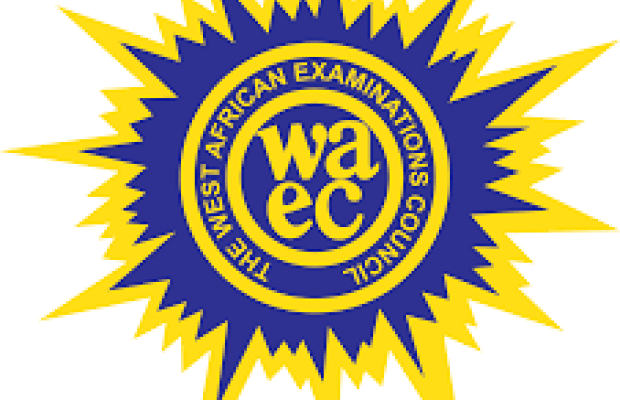You are on this page probably because you are preparing for WAEC 2025. Or maybe you are a parent searching for necessary information in order to help your child to prepare very well. Whichever it is, we are poised to give you all the information you need to actualize your goal. As such, we will share the Biology Specimen for WAEC 2025 here. So that you will know what to expect and plan/prepare ahead of time.

Do remember that you can check the official Official WAEC Time Table. It is important to order your studies according to the timetable considering the fact that you now have a lot to read in a very short time.
Meanwhile, according to the WAEC timetable for 2025, the “Biology 3 Practical A Alternative” exam will hold on Saturday, June 17, 2025 between 8:30am to 10:30am.
So in view of that, we are going to discuss the Biology Specimen for WAEC 2025 for you here.
Table of Contents
What is Biology Specimen for WAEC 2025 all About?
Biology Specimen for WAEC are a limited quantity of animals, plants or their parts which are similar to and represent a much larger amount. WAEC provides these specimens for their science students who are offering Biology for the purpose of practical examination.
Complete Biology Specimen for WAEC 2025
Instructions To Schools:
(A) Each candidate should be provided with the following groups of specimens:
Group I (For all candidates)
- Specimen A – Cervical vertebra of a mammal
- Specimen B – Thoracic vertebra of a mammal
- Speci men C – Lumbar vertebra of a mammal
For specimens D, E, F, and G, you are requested to get four 250 ml beakers and label them D, E, F, and G.
- Put dry garden soil into each beaker, up to 100 ml level.
- Add 10 ml of water to the soil in each of beakers D, E, and F
- Oven dry the garden soil in beaker G and leave dry throughout the period of the experiment.
- For specimen D, put five viable bean seeds into the soil in the beaker labeled D.
- For specimen E, soak five viable bean seeds in water for 2 – 3 hours, then remove the testa of the soaked bean seeds. Split open the cotyledons and remove the embryo of each bean seed. Place the split cotyledons into the soil in the beaker labeled E.
- For specimen F, place five viable bean seeds into the soil in the beaker labeled F and add some quantity of kerosene enough to cover the surface of the soil in the beaker.
- For specimen G, add five dry and viable bean seeds into the soil in the beaker labeled G.
- Place all the beakers in a place with adequate sunlight for seven days.
- Moisten the soils in each of the beakers labeled D and E with 5 ml of water daily for seven days before the date of the examination.
Group II (For candidates in Ghana only)
- Specimen H – Cactus plant (freshly obtained)
- Specimen J – Onion plant (with leaves)
- Speci men K – Green grass (freshly obtained)
Group III (For candidates in Nigeria, Sierra Leone, The Gambia, and Liberia only)
- Specimen L – Adult mosquito (freshly obtained)
- Specimen M – Butterfly (freshly obtained)
- Speci men N – Sugar ant (freshly obtained)
Note:
(i) All specimens can be provided as group specimens for five (5) to ten (10) candidates
(ii) All specimens in each group must carry individual labels (e.g. A, B, C, D, E, F, and G in Group I).
(b) More so, it is essential that each candidate should be provided with the following materials:
(i) glass jar cover or Petri dish;
(ii) four white tiles labelled D, E, F and G;
(iii) spatula (four);
(iv) a hand lens/magnifying lens;
(v) scalpel/razor blade/knife;
(vi) a pair of forceps.
Report Form
Report Forms are also provided separately on which you are required to:
(a) supply the necessary information about the specimens;
(b) report on any difficulty in the conduct of the examination;
(c) report any particular difficulty experienced by any candidate during the conduct of the examination, especially if the examiner would be unable to discover this from the scripts;
(d) carry out and record experimental observations as directed in the Report Form.
(e) You must enclose a completed Report Form in each envelope of the script.
Conclusion on “Biology Specimen for WAEC 2025”
So here’s where we end this very informative article with hope that it is helpful. For candidates preparing for SSCE, the importance of having a foreknowledge of Biology specimen for WAEC 2025 cannot be overemphasized.
Therefore, you must use the above information to prepare your mind and read up all the grey areas. You can also use the comments section to ask questions in case there’s something you don’t understand. Or just share your thoughts with us.
Before you go, kindly help us to reach others with this post. Share with friends on Social Media. Just scroll down to see the Facebook and Twitter and WhatsApp buttons. Thank you so much!
See you on the next article.
For information WAEC as an examination body, visit the Board’s Official Website
Still Got a Question? Drop Your Question Right HERE 👇👇 and click on Search. Get an Immediate Response...
Get in touch with us
Join our FREE 2026 JAMB, WAEC, NECO and BECE Tutorial Classes here: Youtube (Subscribe to the channel)
This is for JSCE, Science and Art Students
If this post was helpful to you, please help us to reach others by sharing with the buttons below!
abubakaruusman72@gmail.com
So what are the major things to bear in mind in each specimen in details